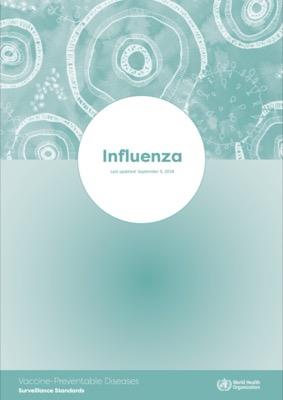Influenza: Vaccine Preventable Diseases Surveillance Standards

Overview
Influenza viruses are orthomyxoviruses that cause acute
respiratory illness, ranging from mild febrile illness
accompanied by body aches, cough and sore throat to
severe pneumonia, which can be complicated by bacterial
superinfection. Influenza viruses that infect humans
are transmitted person to person, mostly by droplets
and aerosols from the respiratory secretions of infected
people, and occasionally from fomites or animals.
Influenza viruses cause seasonal influenza epidemics,
mostly in the winter months in temperate climates and
with less distinct seasonality in the tropics, with annual
attack rates of 5–10% in adults and 20–30% in children
(1). Groups at higher risk of severe illness include young
children, pregnant woman, the elderly and those with
underlying medical conditions. The incubation period
is one to four days. In general, the disease burden of
influenza in lower- and middle-income countries has
been underestimated.
